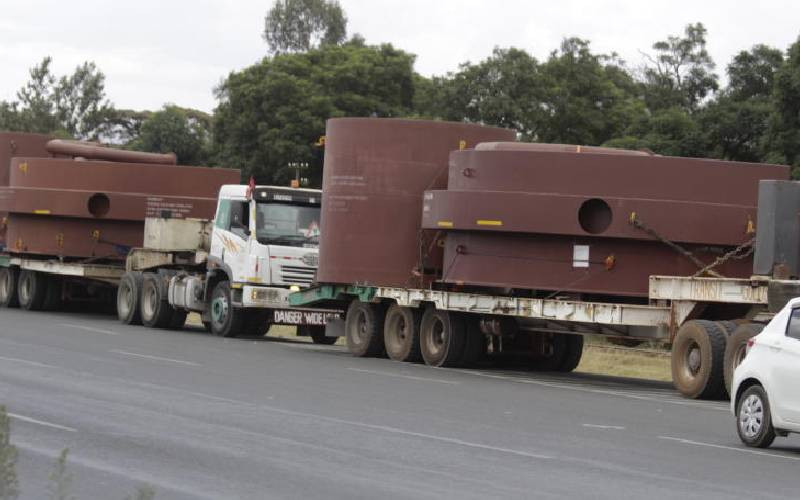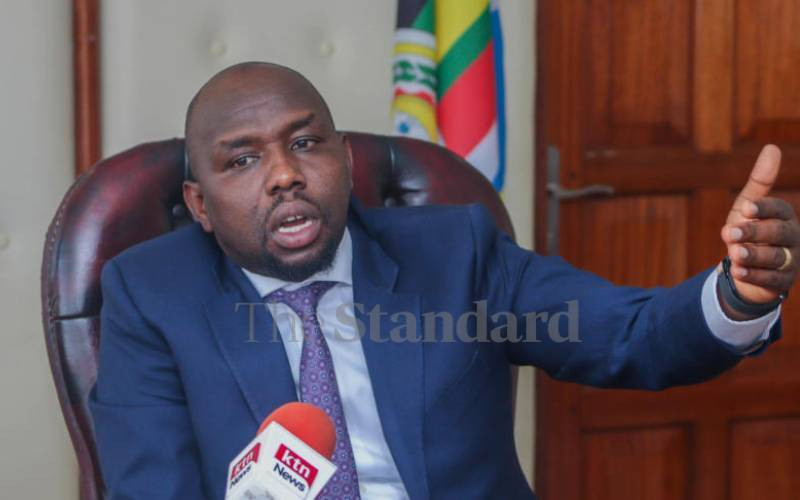The furore generated by news that an African investment firm was eyeing a stake in Rift Valley Railways obscures the fact that transport costs remain the single largest barrier to regional trade.
In fact, several studies quoted by the Government’s own think tank, the Kenya Institute for Policy Analysis and Research, show that transport costs are the biggest barrier to export competitiveness. Our heavy reliance on our costly road network to deliver goods from the port of Mombasa to inland destinations is the cause. When Sheltham Corporation came into the picture several years ago, it raised hopes, now proven false, that the ailing Kenya Railways Corporation would recover. As it now turns out, this was a mirage. Years after the ink dried on the concession agreement, things are no better.
Since the completion of the rail system almost 100 years ago, not a single metre of track has been laid to expand the network’s capacity. Our roads are now finally being upgraded and extended, but every day, more and more cars clog up the roads, so we remain behind the curve in terms of building an infrastructure network that enables, not disables, our economy.
Roads, bridges, railway lines, ports and airports deliver social and economic benefits by connecting companies to markets, and by enabling people to reach water, fuel, schools, clinics, jobs, and each other. Without reliable and competitively priced freight transport systems, delivered on the foundation of sturdy infrastructure, countries have little hope of trading their goods competitively and profitably.
Transport is what makes markets work. We are not just speaking of national ones. The global recession has provided an important lesson on the need to re-examine trade relationships.
Rather than relying on traditional export markets such as the United Kingdom and European Union, we should look closer home. The East African Community now constitutes a sizeable single market, covering an area of 1.8 million square kilometres, and uniting a combined population of about 125 million people and represents a total Gross Domestic Product of $60 billion.
The most effective transportation system to facilitate regional trade is rail. An effective rail service can carry greater freight traffic compared to current levels. Due to chronic under-investment, Rift Valley Railways, the company granted the concession to operate the 900 kilometre Kenya-Uganda connection is stuck, and we are paying a heavy price.
Regional trade
From jeopardising the safety of rail passengers to smothering the vibrancy of regional trade, the costs of a poorly functioning rail transport system are high. As essential movements are delayed or disrupted, transport costs rise, individuals lose time commuting and the environment suffers.
Let us be clear here; rail will never replace roads, but it has a key role to play in serving important transport markets including long distance container markets, medium distance bulk markets and commuter traffic in major cities. Robust rail infrastructure reduces the damage wreaked on roads by the transport of heavy goods and is vital in reducing our dependence on oil.
Transport infrastructure is not cheap. We need the right investment partners for this critical and strategic venture. RVR failed to honour concession payments to both the Kenyan and Ugandan Governments, and instead of being a regional asset, has become a regional liability. With the right investment partners, RVR can be turned around. The meter gauge railway should serve the region’s needs for the next 10-20 years, if upgraded or managed well.
The company would benefit from fresh investment by African investors, with a proven track record in delivering profitable infrastructure solutions that create value for the economies in which they invest. These must be investors who understand the African environment, have experienced the challenges of doing business on the continent and have access to world-class management. As the gateway to East Africa, Kenya’s economic future depends on a well-financed, professionally-run rail infrastructure.
 The Standard Group Plc is a
multi-media organization with investments in media platforms spanning newspaper
print operations, television, radio broadcasting, digital and online services. The
Standard Group is recognized as a leading multi-media house in Kenya with a key
influence in matters of national and international interest.
The Standard Group Plc is a
multi-media organization with investments in media platforms spanning newspaper
print operations, television, radio broadcasting, digital and online services. The
Standard Group is recognized as a leading multi-media house in Kenya with a key
influence in matters of national and international interest.
 The Standard Group Plc is a
multi-media organization with investments in media platforms spanning newspaper
print operations, television, radio broadcasting, digital and online services. The
Standard Group is recognized as a leading multi-media house in Kenya with a key
influence in matters of national and international interest.
The Standard Group Plc is a
multi-media organization with investments in media platforms spanning newspaper
print operations, television, radio broadcasting, digital and online services. The
Standard Group is recognized as a leading multi-media house in Kenya with a key
influence in matters of national and international interest.








